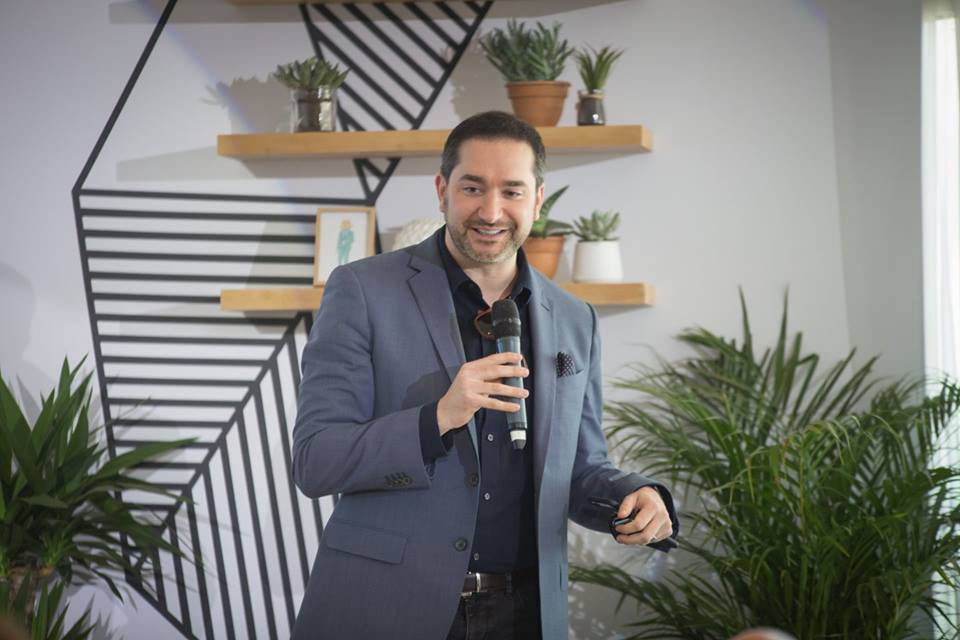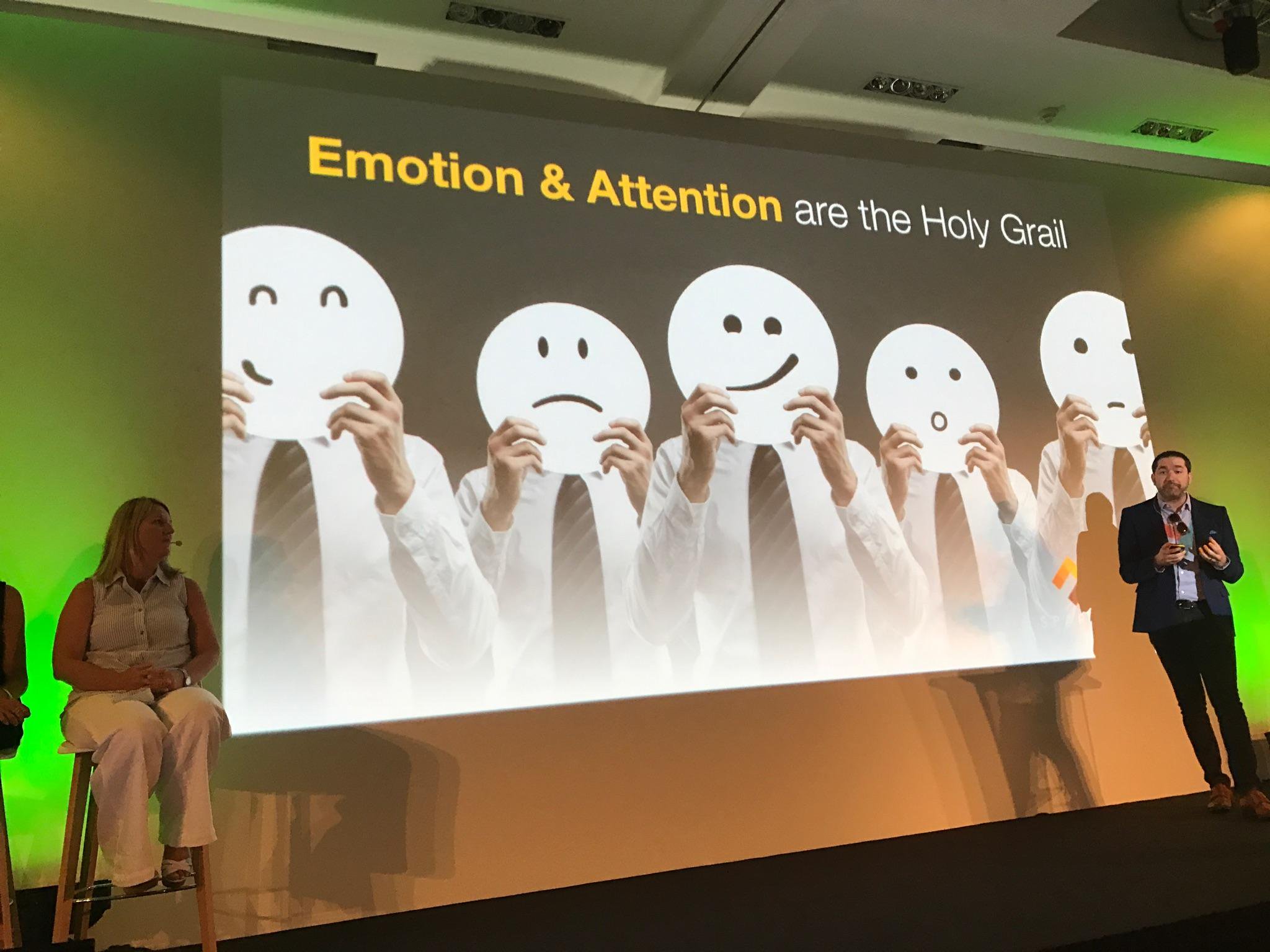Until now, marketers would either have to guess or use focus groups to understand how effective their ad campaigns were going to be. Even then, it would be educated guesswork at best. Neuromarketing, a discipline which studies the human brain to better understand its reaction to stimuli, believes it can do better. SPARK Neuro, a New York-based provider of an advertising and entertainment audience engagement evaluation platform, has a revolutionary product that can help measure the effectiveness and engagement levels of content using neurology, data, and economic theory.

The EEG device being attached (Source: SPARK Neuro website)
The SPARK effect
Classical economic theory characterizes humans as rational beings, even though our emotions and instincts also affect our decision-making process. Humans are incredibly complex and cannot be fully understood from narrow views of motivation which ignore fundamentally strong drivers such as faith, belief, and feelings. There is overwhelming research in numerous fields of study dedicated to understanding the human condition which eschews the exclusive use of rational self interest as a means to understanding human behavior. The was recognized with the 2017 Nobel prize for economics being awarded to a behavioral economist, Dr. Richard Thaler, for championing a new wave of economic analysis that accounted for the irrational nature of human decision making. There are tons of research papers and books outlining the many biases that limit us and skew our reactions.
The traditional methods of understanding the impact or response to any content continues to rely on focus groups. A group of people are called in and shown some content. They are then asked about their views on the content as they are expected to fully process their experience and articulate it in an unbiased manner.
Evidence shows that this method is inherently flawed. Biases exist at the individual and group levels. At the individual level, we see that people are unable to express what they truly feel. The emotional process often happens at the subconscious level and is difficult to articulate.
At a group level, we see herding of opinions based on the composition of the focus group. A dominant person could steer responses in a particular direction. Apart from these, there are confirmation biases as subjects also evaluate the interviewer’s reactions and response. Thus, there may be a divergence between experience and response resulting in election polls and top-rated content differing from the end result. While increasing sample size (think of IMDb), is a possible solution, it is not always feasible.
Essentially, conscious and unconscious processes mean that focus group data is subjected to innumerable biases which are hard to account for. SPARK Neuro is able to overcome this limitation by capturing real data and showing clients the exact response to certain content. This helps their clients take a call on the content and make it more effective for the desired target audience.

The EEG device (Source: SPARK Neuro Website)
Measuring Reactions
SPARK Neuro conducts neurological tests to understand the effectiveness and engagement levels of content by measuring brain and nervous system activity. Their systems capture second-by-second data on attention and emotional levels, giving insights into people’s actual responses.
The testing system consists of four sensors – Electroencephalogram (EEG) to measure brain activity; Galvanic Skin Response (GSR) to track emotional states; micro-facial expression detectors to capture detailed facial reactions; and retina tracking to track eye movements. These sensors are attached to the subject while the subject is consuming the content in question, and the data from the sensors is closely monitored. The data captured from all these sources is run through a proprietary algorithm.
The result – attention and emotion measured as critical metrics
A score ranging from 0 to 10 is generated to capture the attention levels while emotions are captured on a scale from -10 to +10. Negative emotions such as anger and fear are captured on the negative side while positive emotions such as joy and love are captured on the positive side with 0 being the neutral point. While the negative scale only captures negative emotions, it’s implications on the content is context specific. People have spent over a billion dollars last year at the movies to experience fear. Armed with strong scientific data and discussions with the subjects, SPARK Neuro is able to generate actionable insights on the content and recommend a course of action.
Having an insight into the human mind is an incredibly powerful tool – but hits at the heart of the ethical debate that currently surrounds research into the human mind for commercial purposes. In the past, little hacks used by brands – the color red in fast food logos, which was thought to make customers hungrier – were limited by inaccurate and bad science. Does SPARK Neuro use good science to push the boundaries of commercial research into problematic arenas.

Spencer Gerrol, CEO and Founder of SPARK Neuro at Cannes Lion 2017 (Source: SPARK Neuro’s Facebook Page)
The SPARK Journey, Landscape and Future
SPARK Neuro was founded by Spencer Gerrol in 2017. Spencer’s passion for cognitive psychology and technology brought him to neuroscience. He has been working on converting academic research and insights into applicable tools. In 2009, he founded SPARK Experience, a full-service design and user experience agency with an interdisciplinary approach to digital experiences. The origins of SPARK Neuro took place during his time at SPARK Experience. With the rise of machine learning and greater computing power, Spencer and his team started conducting neuroscience research in 2013. One of the most widely covered study of theirs has been that of the 2016 elections where they studied Trump and Hillary supports to understand what drives them.
After Spencer sold SPARK Experience to Motivate Design, he moved on to start SPARK Neuro. Since its founding, SPARK Neuro has worked with some of the biggest companies in the world such as the Paramount Pictures, MSLGroup and NBC. Their two sample case studies on understanding purchasing behavior and super bowl ads are a must read for any neuromarketing enthusiast. Spencer has been recognized in his field and by forums such as the World Economic Forum and Empact100.
SPARK Neuro isn’t the only neuromarketing and audience engagement evaluation company. Firms such as Affectiva, Crescendo and Neuro-Insight that have developed their own tech and have similar, if not overlapping, applications. Apart from standalone competitors, giants such as Time Warner and Facebook are developing their own in-house capabilities. Facebook is also set to enter the neuromarketing space through its Center for Marketing Science Innovation while Time Warner has already established Medialab. The global Neuromarketing technology Market is expected to reach USD 100 million by 2023 growing at a 12% CAGR over the forecast period 2017-2023.
Armed with over $13.5M in Series A funding led by Thiel Capital with investors such as Will Smith and The Tornante Company, SPARK Neuro is all set to increase its employee count to 50 by the end of the year. SPARK Neuro also plans to expand globally with its first international office in Japan. As the venture is said to have turned profitable, Gerrol doesn’t plan on raising any more money till SPARK Neuro reaches a valuation of over $200M. In its recent funding round, SPARK Neuro was valued at $53.5M. While the possibility of an acquisition from the likes of Facebook and Google isn’t ruled out given the complementary nature of neuromarketing, Spencer’s long game is to have an IPO in 2 to 4 years.

Spencer Gerrol at Cannes Lions 2017 (Source: MSL North America – Twitter)
Subscribe to our newsletter



